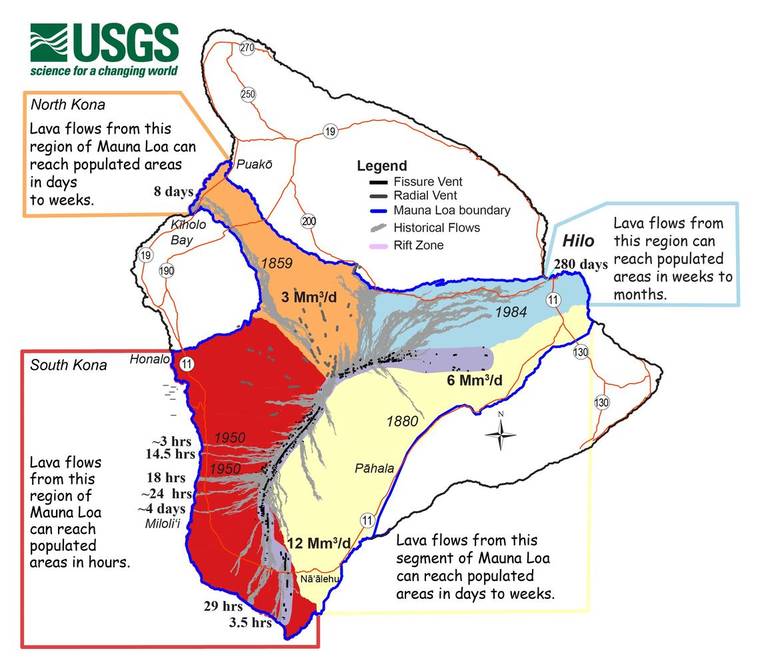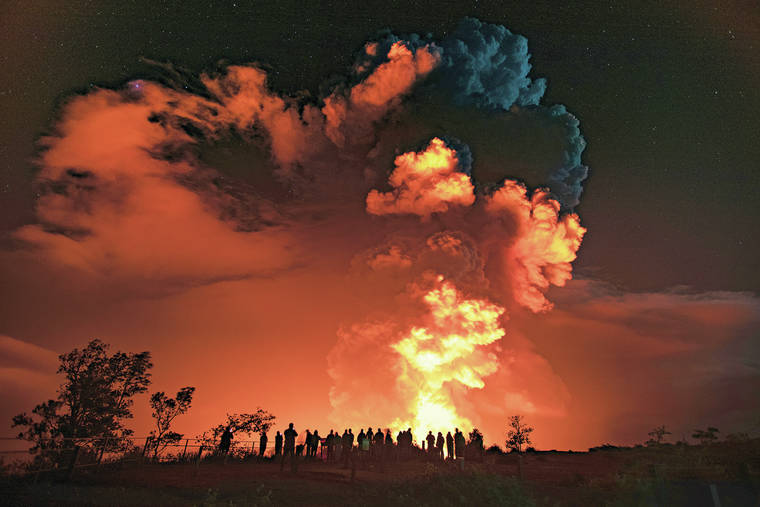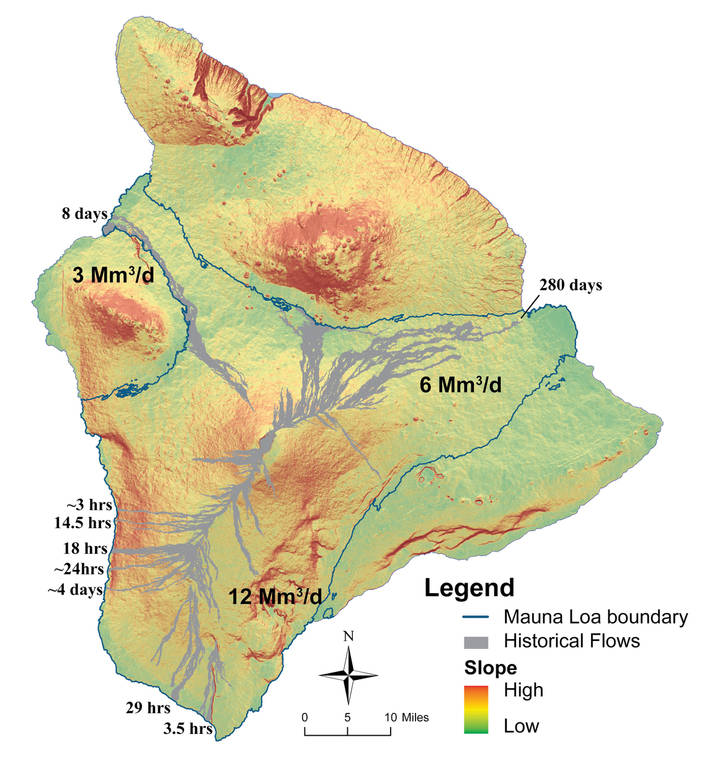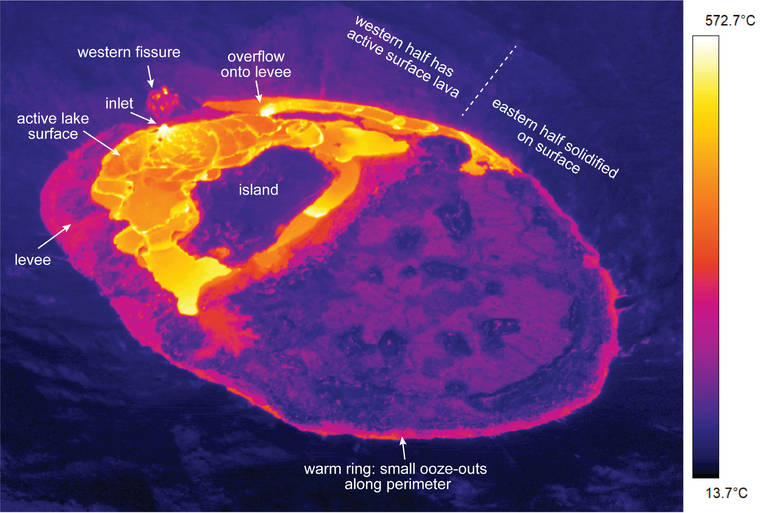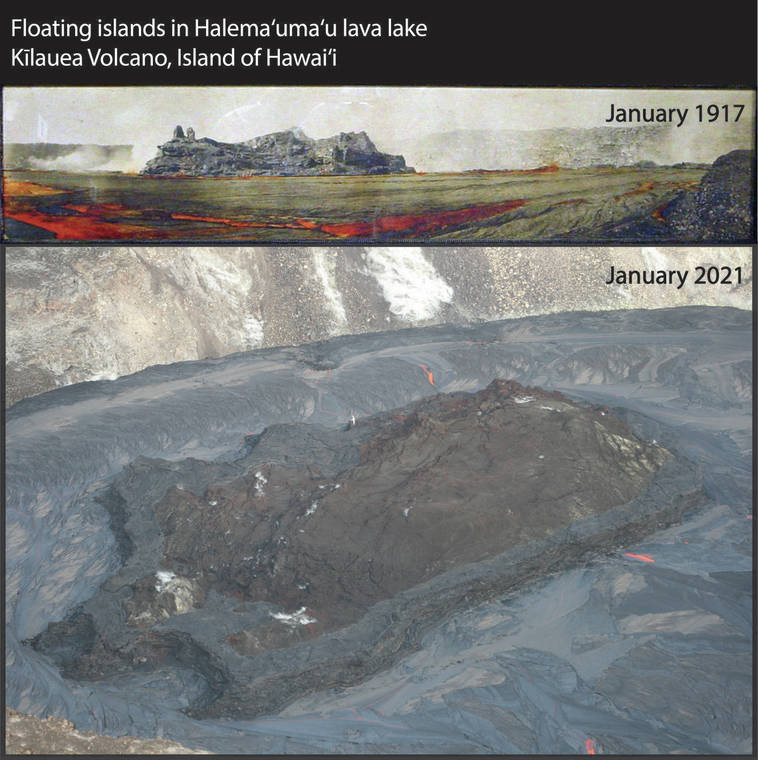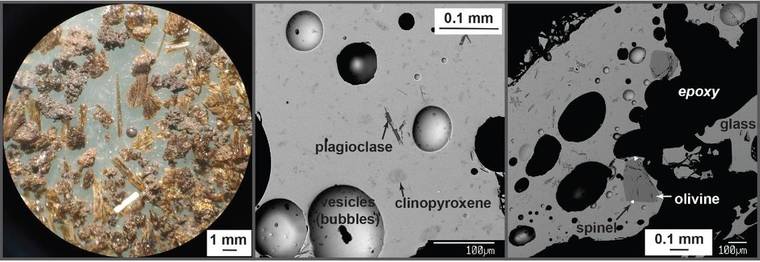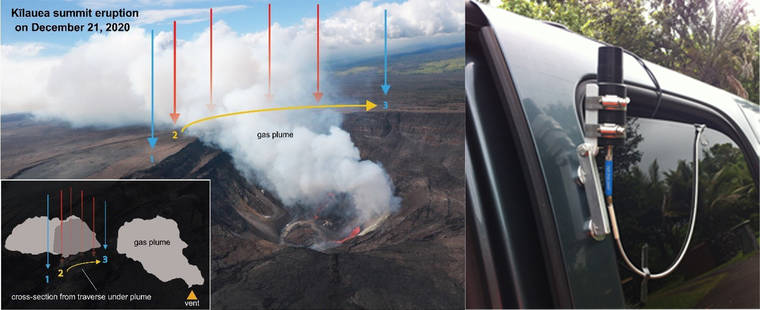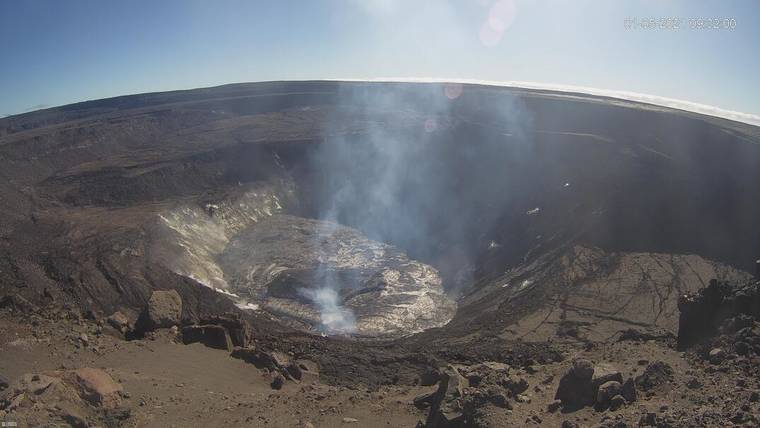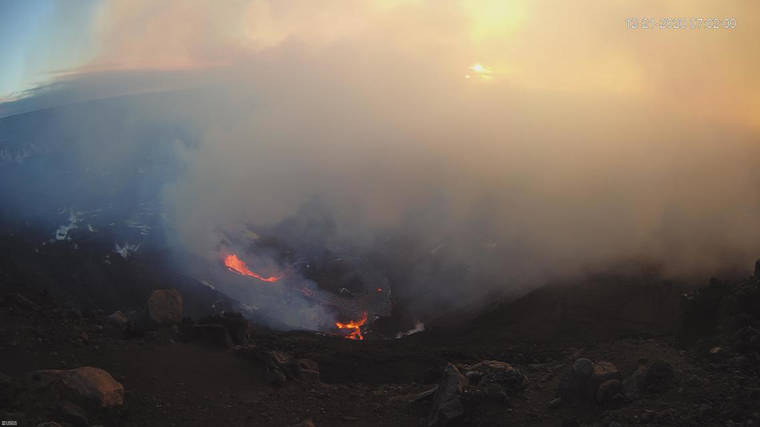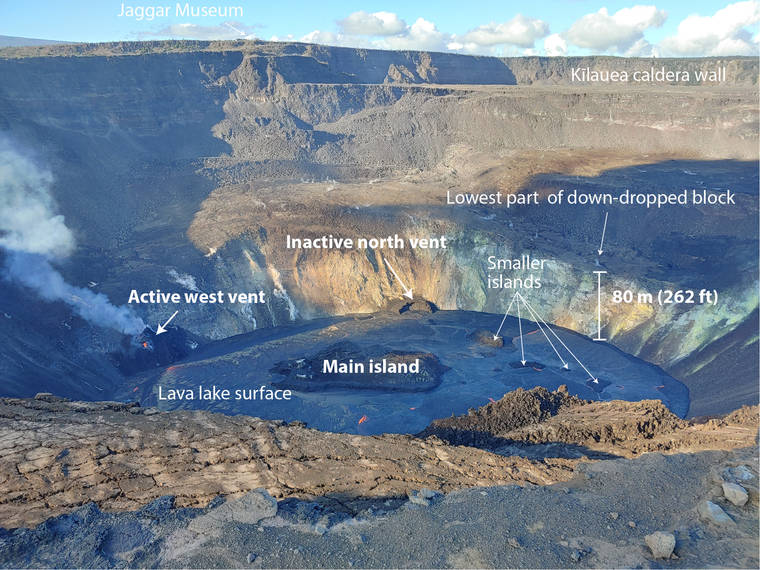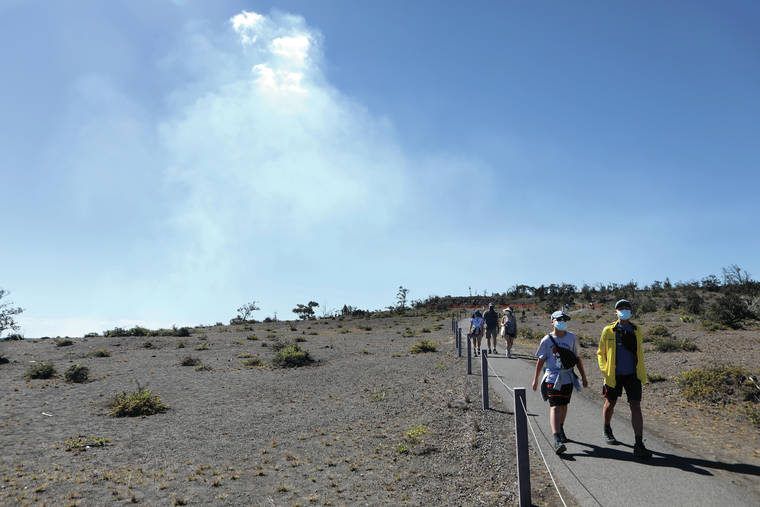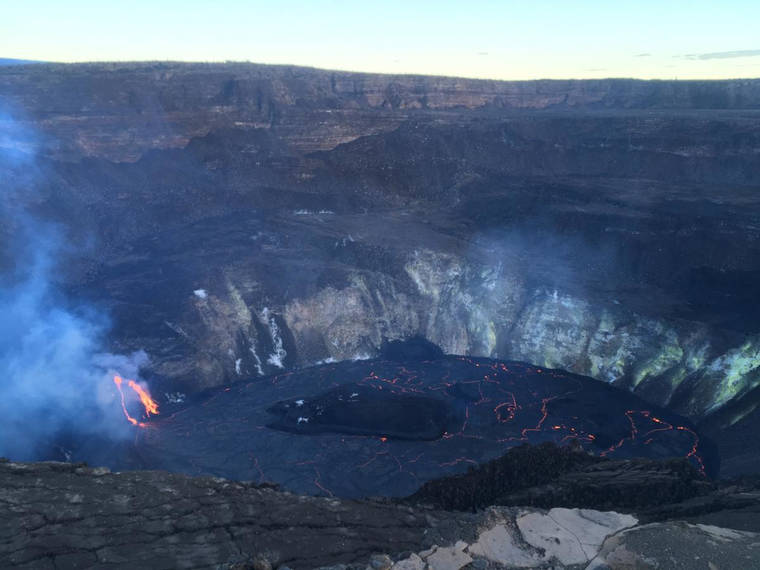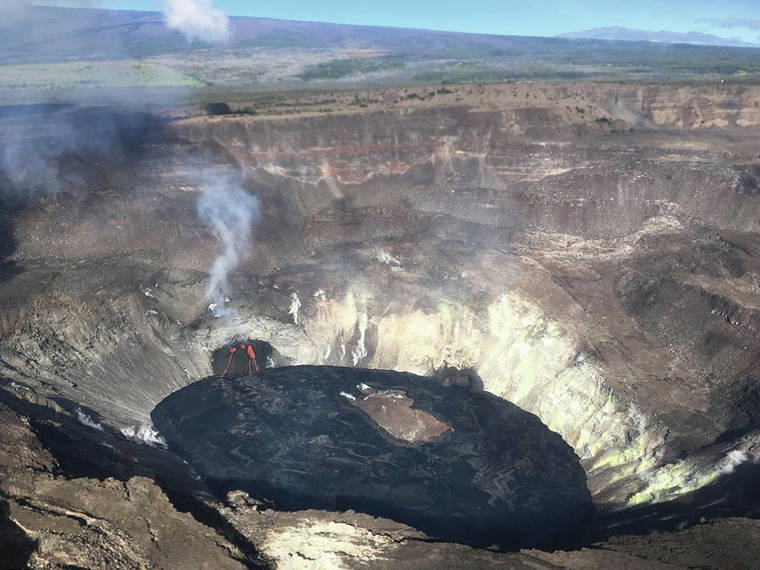Volcano Watch: Failing to prepare, or preparing to fail
Mauna Loa has been in the news lately, as the volcano continues to awaken from its slumber. While an eruption of Mauna Loa is not imminent, now is the time to revisit personal eruption plans. Similar to preparing for hurricane season, having an eruption plan in advance helps during an emergency.
Volcano Watch: Seismicity preceding the 2020 eruption of Kilauea Volcano
Pele returned to the summit of Kilauea on the evening of Dec. 20, 2020. Incredible video documents the start of the new eruption in Halema’uma’u and the dynamic ongoing activity. There was no significant change that suggested lava would erupt again so rapidly, but there were subtle signs of restless behavior around Kilauea’s summit in the months prior to the eruption.
Official name chosen for Fissure 8
Fissure 8 officially has been named.
Volcano Watch: When will Mauna Loa erupt next?
“When will Mauna Loa erupt next?” This was the title of a Volcano Awareness Month video presentation released by the USGS Hawaiian Volcano Observatory in January. This was also the topic of discussion among HVO scientists last week following the detection of slight changes in ground deformation and seismicity at the summit of Mauna Loa.
Volcano Watch: What’s going on at Kilauea’s summit lava lake?
Kilauea’s current lava lake formed on Dec. 20, 2020, and rose rapidly within Halema’uma’u crater during the dynamic first week of the ongoing summit eruption. Near the end of December, the eruption stabilized and the lava lake has been slowly changing since then.
Ken Hon returns to HVO as Scientist-in-Charge
The next U.S. Geological Survey Hawaiian Volcano Observatory Scientist-in-Charge has been named, and it’s a name that Big Island residents may be familiar with — Dr. Ken Hon.
Volcano Watch: Kilauea’s south flank — What’s shaking?
This story begins after Kilauea’s May 4, 2018, magnitude-6.9 earthquake and lower East Rift Zone eruption. The magnitude-6.9 earthquake resulted in seaward motion at the surface of Kilauea’s south flank of up to approximately 1.5 feet as measured by GPS monitoring stations operated by the U.S. Gelogical Survey’s Hawaiian Volcano Observatory.
Volcano Watch: Words matter — Lava, not fire, but island or raft or basalt berg?
Words matter in volcanology just as in the rest of society. Words matter among volcanologists themselves, of course, but they particularly matter in our dealings with the public, when we attempt to both tell what is happening and educate about how volcanoes work. Accuracy of words promotes understanding and clarity of thought and is essential to both telling and educating.
Volcano Watch: A closer look at Kilauea’s newest lava
Every rock on Earth is made of up a unique combination of chemical elements, and lavas/tephra formed during Hawaiian eruptions are no exception. What is the geochemistry of Kilauea’s newest tephra — and how can it help us understand the processes driving the ongoing eruption?
Volcano Watch: Gas math — how we know how much sulfur dioxide volcanoes emit
Volcanic gases are an important part of eruptions — they help magma to rise within the earth and erupt, they can tell us how much lava is being erupted, and the volcanic air pollution (vog) they cause can be a hazard. So it is important for the USGS Hawaiian Volcano Observatory (HVO) to measure how much of what kind of gas is being emitted by our volcanoes.
Volcano Watch: A new tephra lab for HVO eruption monitoring
Tephra is any type and size of rock fragment that is forcibly ejected from a volcano and travels an airborne path during an eruption. Examples include ash, bombs, scoria, and shards of volcanic glass such as Pele’s hair and Pele’s tears).
Vog remains in forecast as Kilauea eruption continues
Lava activity remains confined to Halema‘uma‘u crater, the Hawaiian Volcano Observatory reported Tuesday morning.
Kilauea Volcano emissions unchanged; vog remains in forecast
Voggy conditions are forecast for West Hawaii through at least midweek as Kilauea’s most recent eruption continues, forecasters said.
Volcano Watch: Kilauea’s ongoing eruption: a rising lava lake
It has been an exciting week at Kilauea Volcano as the summit eruption that began on the evening of December 20th continues. The eruption remains confined within Halema‘uma‘u crater. Monitoring data show no signs of activity migrating from the summit into the rift zones, nor indications of summit collapse like those in 2018.
Voggy conditions forecast through Friday
Vog is expected to return to West Hawaii areas as northeasterly trade winds take hold following several days of relatively clear skies.
Voggy conditions forecast for West Hawaii
Vog is expected to return to West Hawaii areas as northeasterly tradewinds take hold following several days of relatively clear skies.
Thousands flock to HVNP to see eruption
Because of the ongoing eruption at Halema‘uma‘u crater, Hawaii Volcanoes National Park has brought in additional staff to manage an influx of visitors.
Kilauea SO2 emission rates drop
Summit sulfur dioxide emission rates continued to drop over the weekend following the start of Kilauea Volcano’s summit eruption late Dec. 20.
Park rangers cite visitors to volcano eruption site
HONOLULU — Park rangers have cited dozens of people who have gathered at Hawaii Volcanoes National Park to witness an ongoing eruption of the Kilauea volcano.
Lava lake drops slightly, emissions decrease
The lava lake inside Halema‘uma‘u crater appears to have dropped by 6 feet in depth, the Hawaiian Volcano Observatory reported Saturday.

